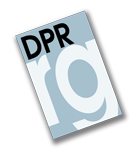La valoración de la prueba testifical civil a examen (una revisión crítica del art. 376 LEC). (RI §417337)

Examining the evaluation of testimonial evidence in the civil trial (a critical review of the article 376 LEC) -
Carlos de Miranda Vázquez
La LEC dedica un solo artículo a regular la valoración de la prueba testifical. La norma remite, sin más, al juzgador a las reglas de la sana crítica. Asimismo, le manda considerar una serie de aspectos, tales como la «razón de ciencia», las «circunstancias» que puedan concurrir en el testigo, y las tachas que pudieran formularse y probarse. Conviene, en un primer momento, efectuar una nueva lectura del precepto que pudiera explicitar contenidos implícitos. En un segundo momento, procede un profundo examen crítico del acierto de la redacción legal y de la suficiencia de las instrucciones proporcionadas por el Legislador para la adecuada aplicación de la norma. Por último, parece posible una reformulación del texto legal que acerque el precepto a la realidad del siglo XXI.
I. INTRODUCCIÓN. II. UNA LECTURA PAUSADA DEL ART. 376 LEC. 1. Sobre su supuesto carácter admonitivo. 2. Las reglas de la sana crítica y los otros tres extremos. 3. ¿Cuándo deberán considerarse las tachas? 4. Brevísima recapitulación. III. EXAMEN CRÍTICO DEL ART. 376 LEC. 1. El objeto de la valoración. 2. Las «reglas de la sana crítica». 3. La «razón de ciencia». 4. Las «circunstancias» concurrentes. 5. Los motivos de tacha probados. 6. El maridaje de las reglas de la sana crítica con los «tres aspectos a considerar». 7. Juicio crítico definitivo de la norma concernida. IV. PROPUESTA DE REFORMULACIÓN DEL ART. 376 LEC. 1. Propuesta de reformulación. 2. Justificación de la propuesta. 2.1. El par binario «fiable/no fiable». 2.2. Un testigo puede ser fiable y no fiable en relación con narraciones distintas. 2.3. Las leyes en materia de Psicología del Testimonio. 2.4. La información sobre la que aplicar las leyes de la Psicología del Testimonio. 3. Otras reformas paralelas (e indispensables). 4. A modo de epílogo.
The LEC dedicated only one article to regulate the assessment of the testimony. The norm sends the judge to the rules of the sound criticism, without any other detail. It also forces to consider some aspects as the source of information, witness circumstances and the suspicion of partiality, if it sounds. At first, we are going to make a new reading of the norm in order to explain possible implicit contents. In a second stage, it comes a deep critical examination of the correctness of the legal wording and the adequacy of the instructions provided by the legislator for the proper application of the rule. Finally, it seems possible to reformulate the legal text that brings the provision to the reality of the XXI century.
I. INTRODUCTION. II. A CAREFUL READING OF ARTICLE 376 LEC. 1. About its alleged admonitory character. 2. The rules of sound criticism and the other three items. 3. When should the suspicions of partiality be considered? 4. Brief recap. III. CRITICAL REVIEW OF THE ARTICLE 376 LEC. 1. The object of the valuation. 2. The «rules of sound criticism». 3. The statements about the source of the information. 4. The involved circumstances. 5. The grounds of the suspicions of partiality. 6. The pairing of the rules of the sound criticism and the «three items to consider». 7. A global valuation of the concerned norm. IV. PROPOSAL FOR RECASTING THE ARTICLE 376 LEC. 1. Proposed reformulation. 2. Justification of the proposal. 2.1. Binary pair: «Credible/non credible». 2.2. One witness can be credible and at the same time incredible regarding different stories. 2.3. The laws of Forensic Psychology. 2.4. The information in which to apply the laws of Forensic Psychology. 3. Another parallel (and indispensable) reforms. 4. As an epilog.

 DIRECTOR
DIRECTOR